Day 3 of a three day Winter Tour in Norfolk today. The heavy rain cleared through overnight and it was dry again all day. After a cloudy start, the sun started to break through the clouds before we enjoyed a lovely bright afternoon, even if it was rather breezy again.
Part of the plan for this weekend was to look for some owls. Having seen Short-eared Owls and Barn Owls on Friday, we headed out to add to our owl list this morning. We drove inland and set off down a footpath. Two Mistle Thrushes flew up out of the neighbouring field and into wood.
When we got to the edge of the wood, we could hear Long-tailed Tits calling in the trees. A Goldcrest appeared above us, feeding in the outer branches of a pine tree, hovering to pick food from the needles. A Coal Tit flew out into the bare tree next to it. A little flock of finches was feeding in the edge of a harvested beet field alongside and flew up into the trees as we came out from behind the hedge. There were several Chaffinches and Goldfinches and at least one Greenfinch in with them too.
We walked on, round to the far side of the wood and looked back at the edge of the trees. The Tawny Owl was asleep in its hole. We got it in the scope and from time to time it moved its head or opened its eyes, enough to prove it wasn’t a cardboard cutout we had put there earlier!

We stood and watched the Tawny Owl for a while. A Stock Dove flew out from over the wood and across the field next to us. Then we had to tear ourselves away and walk back. There were lots of Pied Wagtails in the beet field now – we counted at least 40 together at one point, an impressive flock.
Moving on, we made our way further inland, looking for Little Owls. There were none on the first barns we checked, but at the second we could see a shape tucked under the lip of the roof, a Little Owl. We parked out of sight and walked back to where we could view it from a distance. It was in a spot sheltered from the wind, and it was looking out towards the morning sun, which just poked out from behind the clouds at times.
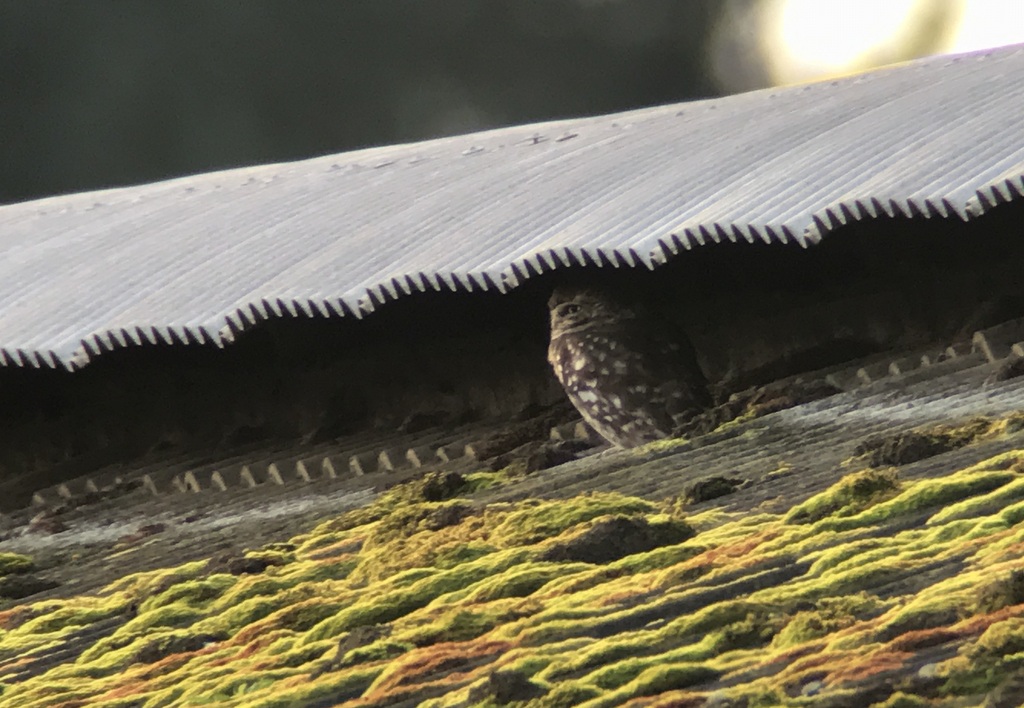
Having all had a good look at the Little Owl, we moved on again and dropped back down to the coast. We made our way along to Holkham and parked at the top of Lady Anne’s Drive. There were lots of Wigeon feeding on the grazing marshes, some very close to the road, and looked stunning as the sun came out again. A few Teal were in amongst them, as well as a scattering of Lapwing, Curlew and Redshank. A single Fieldfare was out on the grass too.

We heard Pink-footed Geese calling and looked over to see a large flock come up from Quarles Marsh, over towards Wells. They flew towards us in several skeins, and we noticed there were some smaller geese in with them, Barnacle Geese. They came right overhead, at least a dozen.

The geese all whiffled down and landed on the grazing marshes the other side of the Drive. Most landed behind the first ditch, out of view behind the reeds and brambles, but a few of the Pink-footed Geese landed closer, on our side of all the vegetation. We had a good look at some of them in the scope, we could see their delicate dark bills with a narrow band of pink and their pink legs.
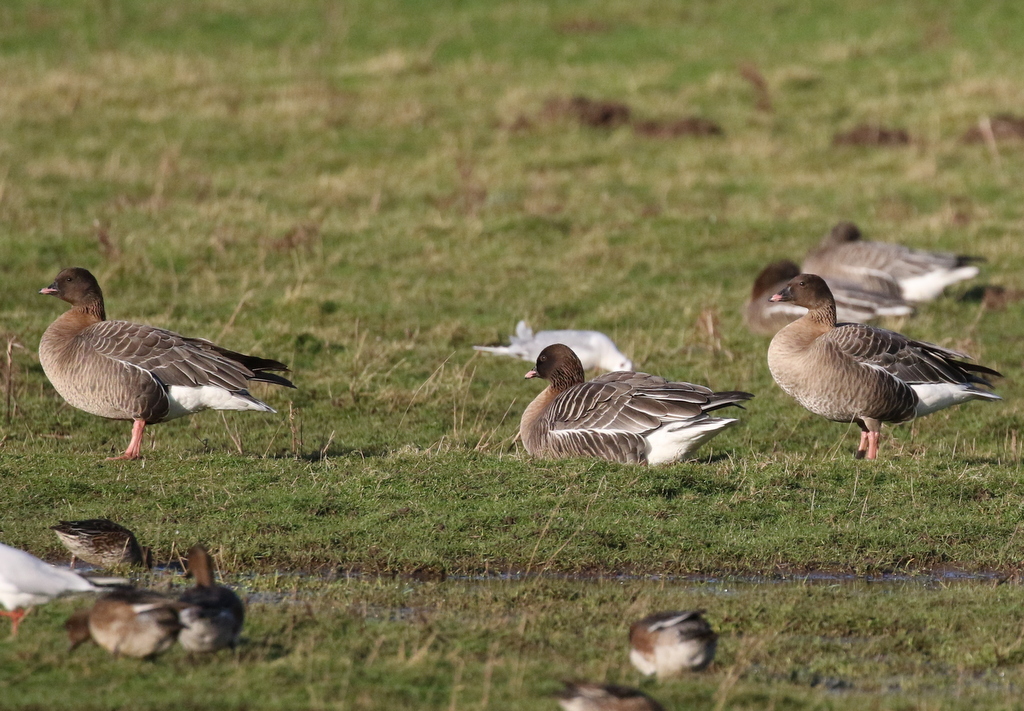
As we walked up towards the pines, we could see a covey of Grey Partridges on the bank before the ditch on the far edge of the grass. We counted twelve together, looking rather like clods of earth.
After a quick stop in the Lookout Cafe, we made our way out to the beach. As we got to the bottom of the boardwalk, we could see some larks very distantly feeding on the edge of the dunes out to the west, but through the scope we could see they were Skylarks. A big flock of Linnets flew up from the saltmarsh over in that direction too, swirling round before dropping down again.
There was a lot of water on the saltmarsh, after a big tide overnight and lots of rain. We decided to walk east first. A flock of Brent Geese was feeding out in the middle and a quick scan through them revealed a slightly darker bird with a more noticeable white flank patch and collar than the others. It was the regular Black Brant x Dark-bellied Brent hybrid which returns here with the Brent flock each winter.
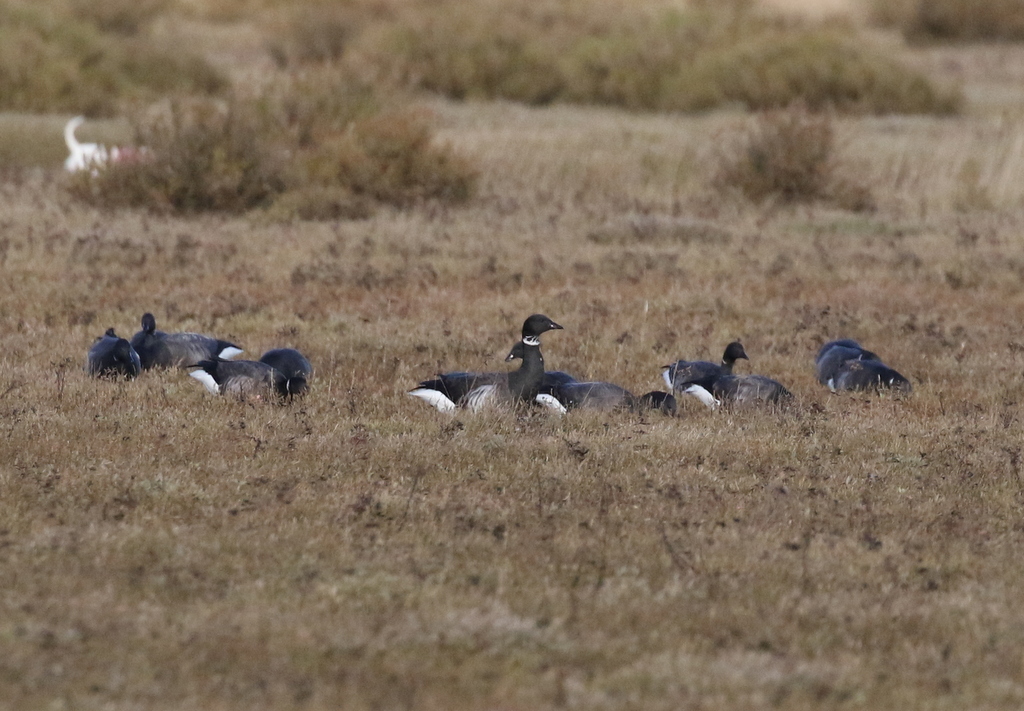
Two Rock Pipits flew in and landed on the edge of the saltmarsh in front of us, feeding for a minute or so before flying off again calling. There were a few people walking back from the cordon and they all said there was no sign of any Shorelarks there. We couldn’t see the Snow Buntings either when we got there. We walked all the way down to the far end and out onto the beach.
It was very windy out here. We tried to find some shelter in the edge of the dunes, although it was hard to find anywhere out of the wind, and stopped to scan the sea. A lone Sanderling flew down along the shoreline. When we turned round, the Snow Buntings flew in and landed in the cordon just behind us. They were very flighty today, and when they flew up again they landed next on the edge of the sand just behind us, a great view.

Thousands of Common Scoter were out on the sea again, but they were a bit further out today and the sea was quite choppy, which with the wind made it impossible to pick out anything else in with them. We managed to find three Long-tailed Ducks, but they were thankfully much closer in. Even so, they were diving constantly and hard to see in swell, but eventually everyone got a look at them. There were several Red-breasted Mergansers too, plus a single Red-throated Diver on the sea and another flying past.
We were hoping the Common Scoter would fly, to give us a chance to find a Velvet Scoter in with them, but they were just riding out the waves, and not taking off today. We decided to start walking back, and have another look for the Shorelarks. The Snow Buntings were in the cordon still, probably about 90 of them, catching the low winter sun which had come out now. There was still no sign of the Shorelarks there though.
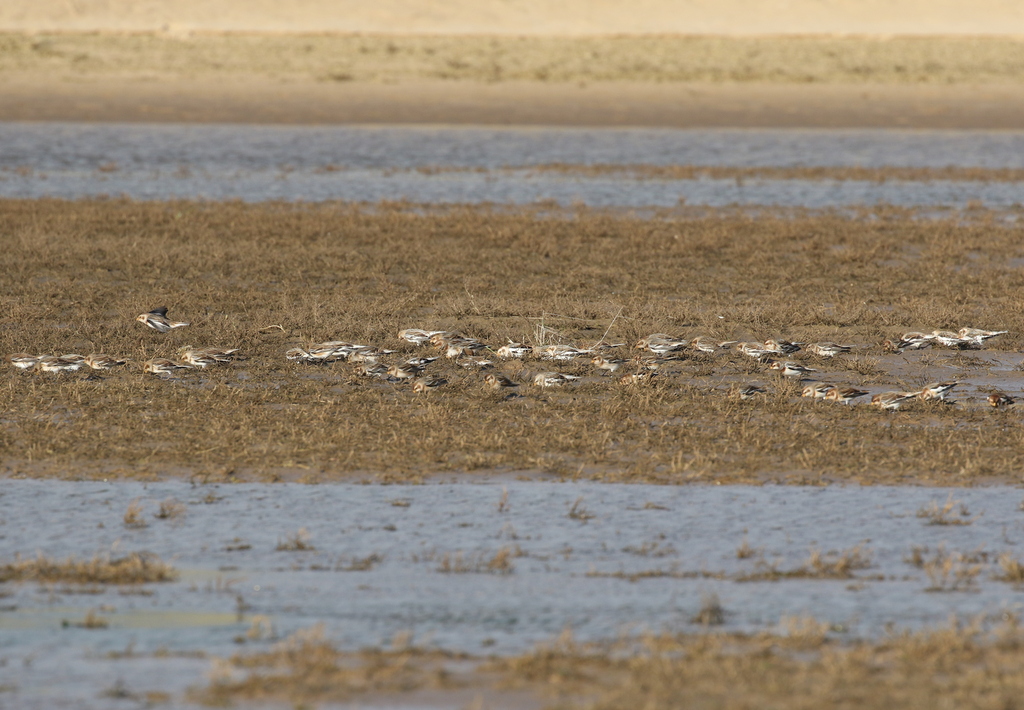
We thought we would check out the saltmarsh west of the Gap, to see if the Shorelarks were there. On our way back, we bumped into one of the wardens who told us they had also been seen just east of the Gap this week. We out round to the dunes for a quick look there first, but there was no sign. We could see lots of water still in the Gap channel, and there was no way across without wellies. So while the group walked back round via the cordon again, the intrepid guide set off for a quick check of the saltmarsh the other side to save time. We arranged to meet back by the boardwalk.
When the group got back to the cordon, they found a couple of people watching the Shorelarks, which had flown back in. They had a good look at them through the scopes, but by the time their guide got over, the Shorelarks had flown off again. At least the most important people had seen them!
We walked back to the Lookout Cafe for lunch. Afterwards, we drove across to Holkham Park and walked in through the trees. There were lots of tits coming to the feeders by the houses, and we found a Marsh Tit and a Coal Tit in with them. We made our way down to the lake, starting at the northern end. There were lots of ducks on the water – Mallard, Gadwall and Shoveler, plus Tufted Duck and Pochard.
As we walked slowly down along the bank, we scanned the water, looking for the Black-necked Grebe. We could see a Great Crested Grebe and a Little Grebe, busy diving. A flock of Long-tailed Tits was feeding in the trees by the path. A Great White Egret flew across the lake further down.
We found the Black-necked Grebe in the middle of the lake. At first, we were looking into the sun, but we managed to get round to the other side of it, where the light was much better. It was diving constantly too, and we had to be quick to get it in the scopes. Eventually everyone got a good view of it, a small grebe with the dark on the head curling down onto the sides of the face behind the red eye. A Great Crested Grebe appeared in the same view at one point, much larger, with a much longer dagger-shaped bill.
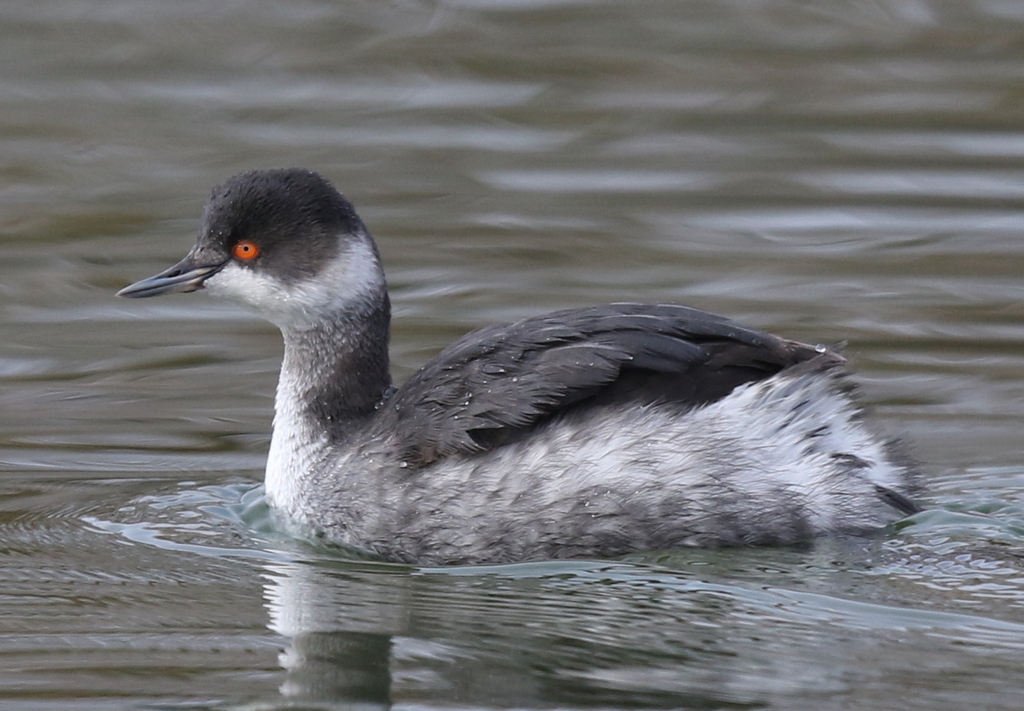
After watching the Black-necked Grebe for a while, we walked back through the middle of the Park. There were lots of Fallow Deer by the path which looked stunning in the afternoon sunshine. A Red Kite drifted over the edge of the trees. A Green Woodpecker was feeding out on the open grass with four Mistle Thrushes. When we got back to the gates, we found a Great Spotted Woodpecker now on the peanuts by the houses.
As we were getting everything back in the minibus, a Barn Owl flew across the road just beyond the car park and in through the trees behind. Out hunting already. As we drove east, another Barn Owl was hunting over the verge by the side of the road.
We parked at the top of Stiffkey Greenway and set up the scopes on the edge of the saltmarsh to scan. It was a lovely bright evening and the wind had even dropped now. There were several groups of Brent Geese, lots of Little Egrets, and a scattering of Curlews and Redshanks out there. A Marsh Harrier was hanging in the air away to the east. A Merlin appeared away to the west, perched on a low bush, preening out on the saltmarsh.
A distant ringtail Hen Harrier came up in front of East Hills. We watched it hunting, making the use of the last of the light, disappearing off towards Wells. A little later what was presumably the same bird came back the other way, a little bit closer to us this time. We had a couple more Merlin sightings, perched on different bushes – but it was hard to tell how many different birds were involved. A very distant Barn Owl was hunting out at East Hills and another flew across the road behind us.
Finally a grey male Hen Harrier appeared, also way out at East Hills. It flew up and down in front of the trees a few times before dropping into the vegetation. The light was starting to go now so we decided to call it a night. It had been another great day, to wrap up three very successful days out, great Norfolk winter birding.
















